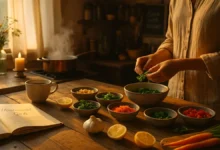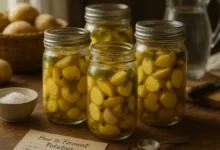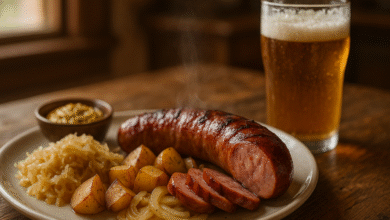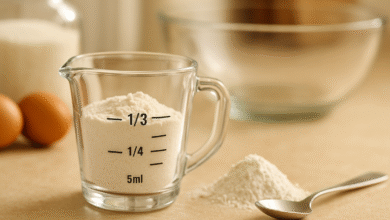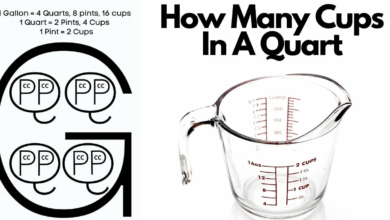How to Make Homemade Corn Syrup Guide: Easy Method for Perfect Sweetness
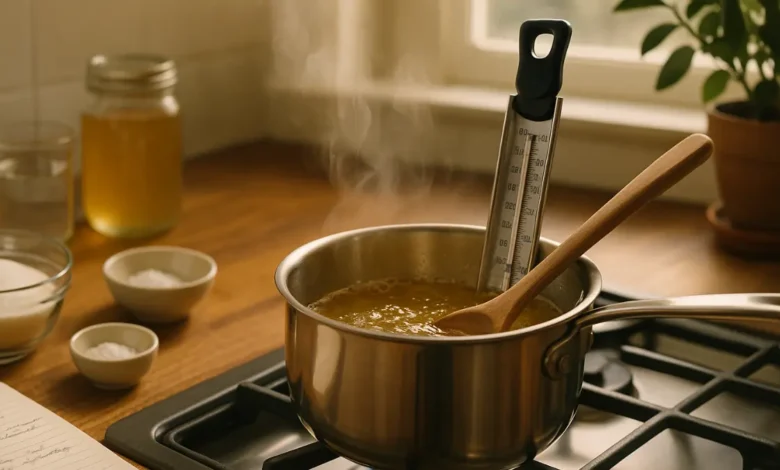
Learn how to make homemade corn syrup easily with simple ingredients and expert tips for smooth, glossy, crystal-free results. Perfect for baking, candy, and desserts.
Craving that glossy, silky sweetness for candy, caramel, marshmallows, or frosting and want full control over the ingredients and flavor? This friendly, expert guide shows exactly how to make homemade corn syrup at home with simple pantry items while keeping things stable, smooth, and delicious.
What Corn Syrup Really Is And Why Cooks Use It
Corn syrup is a liquid sweetener made by breaking down starches into glucose-rich sugars that resist crystallization. In a kitchen context, the goal is not industrial processing but a smooth, clear syrup that behaves reliably in confections and baking. When it is made thoughtfully, it offers a clean sweetness and a glossy finish that granulated sugar alone cannot provide.
Bakers love it because it keeps candies from turning grainy, keeps sauces pourable, and gives frosting and caramel a soft sheen. If you have ever struggled with gritty fudge or seized caramel, you have already met the problem that corn syrup solves. Learning how to make homemade corn syrup gives you a versatile stabilizer you can trust in countless recipes.
The Science That Makes Syrup Work
At the heart of syrup craft are two ideas. The first is controlling crystallization. Ordinary table sugar loves to snap back into crystals, especially when the mixture is agitated or a stray grain sneaks in. The second is managing inversion. With a little acidity and heat, sucrose breaks into glucose and fructose, which behave differently than sucrose and help keep the final syrup smooth.
A pinch of acidity and a gentle, steady simmer tilt the chemistry in your favor. The sweetness stays bright, the texture stays fluid, and your sweets stay free from the dreaded sandy bite. Once you understand this, how to make homemade corn syrup turns from mystery to method.
Ingredients You Need And What Each One Does
The core formula is simple: sugar, water, a touch of acid, and a hint of salt. Each does an important job. Sugar provides structure and sweetness. Water dissolves and helps control temperature and concentration. Acid nudges sucrose toward inversion, discouraging crystallization. Salt rounds the flavor and tames harsh edges so the result tastes balanced rather than flat.
Optional ingredients include a dash of vanilla for warmth, a ribbon of honey for body, or a spoon of neutral oil to suppress foaming. None of these are strictly required, yet each can be useful depending on the dessert. When you practice how to make homemade corn syrup, try the base version first, then add personality.
Quick Role Reference
| Ingredient | Role in the syrup | What to keep in mind |
|---|---|---|
| Granulated sugar | Sweetness and structure | Dissolve fully before simmering |
| Water | Solvent and heat control | Start with cold water for even dissolving |
| Acid such as lemon juice or cream of tartar | Promotes inversion, reduces crystallization | Use a light hand for clean flavor |
| Pinch of salt | Flavor balance | A tiny amount brightens sweetness |
| Optional vanilla | Aroma and warmth | Add off heat for best fragrance |
| Optional honey or glucose | Extra anti-crystallization support | Adds color and deeper flavor |
Equipment That Makes The Job Easier
A heavy-bottomed saucepan helps distribute heat evenly. A heatproof spatula or wooden spoon keeps sugar from sticking to the corners. A pastry brush and a cup of hot water are useful for washing down rogue crystals from the sides of the pan. A clean glass jar with a tight lid is ideal for storage.
If you own a candy thermometer, great, but you can still succeed without one by using visual cues and texture tests described later. The more you practice how to make homemade corn syrup, the more those cues will feel second nature.
The Core Method, Explained Like A Pro
Begin by combining sugar and water in the saucepan. Stir gently until the mixture looks like wet sand and then clear liquid. Place the pan over medium heat and resist the urge to stir once it comes to a simmer. Stirring at this point can knock crystals off the sides and seed the whole batch.
As the syrup heats, small bubbles turn into a steady, gentle boil. Use the pastry brush dipped in hot water to wash any visible crystals from the inner walls of the pan. Add the tiniest splash of acid and a pinch of salt. Keep the simmer relaxed and patient. Your goal is clarity, not speed. Mastering this calm pacing is the essence of how to make homemade corn syrup at home.
Keep simmering until the syrup turns clear, slightly thick, and lightly glossy. When a spoon is lifted, the syrup should coat it in a thin film that slowly drips rather than runs. Take the pan off the heat and let it settle. If you want aromatic notes, stir in vanilla now. Let the syrup cool until warm, then transfer to the storage jar.
Reading Doneness Without A Thermometer
You have several kitchen-friendly cues. The bubble size tells a story. Tiny, quick bubbles mean the syrup is still very light. As water evaporates, bubbles become round and slower, and the surface looks glassy. The spoon test also helps. Dip, lift, and watch. A thin, almost watery drip says it needs more time. A smooth, ribbonlike drip means it is ready.
Another cue is the thread test. Let a drop fall between thumb and forefinger after cooling a moment and gently pull apart. A short, delicate thread that breaks easily is about right for general use. These tactile checks remove fear from how to make homemade corn syrup and build your cook’s instincts.
How To Prevent Crystals And Keep The Texture Silky
Crystals love sharp corners and agitation. Keep the sides of the pot clean, avoid scraping the bottom, and do not stir once the syrup starts to simmer. Any dry sugar clinging to the pan can seed the entire batch, so be generous with that quick washdown using the pastry brush.
A trace of acid keeps sucrose from snapping back into crystals, and a minute drizzle of honey or ready-made glucose, while optional, can supercharge stability. If you ever had a batch turn grainy, this part of how to make homemade corn syrup will feel like a breakthrough.
Pro tip: swirl instead of stir. A gentle swirl moves heat evenly without throwing gritty sugar into the mix.
Pro tip: keep tools scrupulously clean and free of undissolved sugar. Even a tiny grain can start a chain reaction.
Flavor Variations Without Losing Function
Once you make a base batch, experiment. A scraped vanilla bean lends bakery warmth. A small piece of lemon peel steeped briefly after cooking gives a bright, sunny aroma. A ribbon of honey adds floral depth and a faint amber tint, while a spoon of light molasses turns the syrup into a richer, more old-fashioned sweetener.
You can also add a pinch of sea salt for a salted caramel vibe without pushing the syrup into full caramel territory. As you explore, always keep clarity and fluidity in mind. Flavor should complement function. That way, how to make homemade corn syrup remains reliable while welcoming your signature style.
Clear Versus Amber: Choosing The Shade That Fits
Clear syrup is perfect for marshmallows, sugar cookies, and icings where color matters. Amber syrup leans toward caramel and praline, where a hint of toastiness enhances complexity. The shift happens with time and heat. A longer simmer invites light Maillard magic and a cozy flavor.
If you chase a richer tone, do so gradually and stop before the syrup turns dark or smells smoky. Think whisper of toast rather than full campfire. Controlled color is a key part of how to make homemade corn syrup, letting you tailor the syrup to the dessert rather than forcing the dessert to adapt to the syrup.
Storage, Shelf Life, And Safety
Once cool, store the syrup in a clean, tightly sealed glass jar. Keep it in a cool cupboard away from direct sunlight. The high sugar concentration naturally protects it, and the small touch of acid helps further. If you prefer, refrigeration is fine, though the syrup will thicken when cold.
Should it crystallize during storage, warm the jar in a water bath and swirl gently until smooth again. No need to toss it. A little warmth restores the silk. This calm, low-waste approach is part of the rhythm of how to make homemade corn syrup that respects both flavor and pantry economy.
Troubleshooting Common Issues
Grainy texture is the most frequent complaint. The fix is to gently reheat with a splash of water and a bit more acidity, then cool without agitation. Cloudiness usually means undissolved sugar or over-aggressive stirring. Gentle heat and patience return clarity.
If the syrup feels too thin, simmer a little longer to drive off more water. If it is too thick, loosen with warm water a small spoonful at a time. Troubleshooting is not failure; it is a conversation with the pan. This mindset makes how to make homemade corn syrup feel like craft rather than chore.
Quick Troubleshooting Map
| Problem | Likely cause | Practical fix |
|---|---|---|
| Grainy syrup | Seed crystals from pan walls | Reheat with a splash of water, wash down sides, add a touch of acid |
| Cloudy syrup | Undissolved sugar or stirring after simmering began | Warm gently until clear; avoid stirring, only swirl |
| Too thin | Not reduced enough | Return to a gentle boil until it coats a spoon |
| Too thick | Reduced too far | Add warm water gradually and stir off heat |
| Dark taste | Overcooked | Dilute with fresh syrup or start a new batch for delicate desserts |
How To Use Your Syrup In Real Recipes
Stir a ribbon into caramel to keep the sauce silky. Add a spoon to buttercream for shine and stability. Fold a measured amount into marshmallow fluff for a pillowy texture that pipes beautifully. Many classic candies, from nut brittles to chewy taffies, depend on the anti-crystallization power this syrup provides.
For baked goods, a small measure brings moisture and a tender bite without pushing flavor out of balance. In ice cream, it suppresses large ice crystals and helps scoopability. Once you master how to make homemade corn syrup, doors open across your dessert playbook.
Adjusting Sweetness And Texture For Different Desserts
Every dessert wants a slightly different balance. Marshmallows love a lighter syrup that pours easily. Caramel benefits from a deeper, faintly amber syrup. Praline and nougat prefer a stable, neutral base that will not crystallize during cooling. You do not need new tools for each version, only attention to timing and heat.
If you crave thick, high-gloss ribbons, cook a touch longer. If you need something that dissolves quickly into whipped cream, stop a little earlier. This tuning step is where how to make homemade corn syrup becomes personal rather than formulaic.
Substitutes And When They Work
There are times when you may choose an alternative. Honey offers richness but brings its own pronounced flavor. Maple syrup is soulful yet changes the character of candies and can crystallize if the underlying recipe is not adapted. Golden syrup and ready-made glucose solutions behave very well but taste and color differ from a clear, neutral corn syrup.
Use this quick guide when swapping. The goal is not dogma but fit. If the dessert depends on neutral sweetness and perfect clarity, your homemade corn syrup is often the better match. Understanding substitutes deepens your grasp of how to make homemade corn syrup because you can shape function and flavor with intent.
Substitutes Snapshot
| Option | Flavor impact | Performance in candy | Best use case |
|—|—|—|
| Honey | Floral, warm | Good anti-crystallization, adds color | Caramels, granola bars, glaze |
| Maple syrup | Distinct, woodsy | Can crystallize without adjustments | Sauces, breakfast sweets |
| Golden syrup | Buttery, light caramel | Very stable | Caramels, toffees, cookies |
| Ready-made glucose | Neutral | Excellent stability | Professional candy work |
| Simple syrup | Neutral but thin | Weak stability | Cocktails, quick fruit sauces |
Health, Labeling, And Balance
This is a dessert tool, not a daily tonic. It is wise to treat it as an occasional ingredient, especially if you are managing sugar intake. That said, the gift of homemade is control. You decide the sweetness level, the final color, and the add-ins you feel comfortable serving.
If dietary needs suggest alternatives, lean on the substitutes table above. The idea behind how to make homemade corn syrup is empowerment. You can choose a version that aligns with your goals while still delivering the texture and reliability a recipe requires.
Flavor Boosters That Keep The Syrup Functional
A whisper of vanilla heightens other flavors without shouting. A strand of citrus peel adds sparkle. A pinch of espresso powder nudges chocolate desserts forward. These boosters belong in the aroma column, not the structure column, which means they should never interfere with clarity.
Add such accents off heat and in very small amounts. The signature of excellence in how to make homemade corn syrup is that it disappears into the dessert, leaving behind only polish and poise.
Working Clean And Safe
Sugar syrup is sticky and hot, so choose a clear workspace and a stable stovetop. Keep children and pets away while simmering. Use utensils with long handles and keep a bowl of cold water nearby to cool a fingertip should a stray drop land where it should not.
When transferring to a jar, let the syrup cool to warm so the glass is not shocked by heat. Wipe rims clean before sealing. Safe habits become automatic with repetition, and they make how to make homemade corn syrup feel calm and confident every time.
Environmental And Budget Notes
Homemade syrup helps reduce packaging waste, trims extra grocery runs, and gives you a sweetener that can be made in sensible amounts. It also lets you choose responsibly sourced sugar and customize the flavor so you use less overall.
Because you control the process, a single session yields enough syrup for multiple desserts, and you can reset thickness with a splash of water if needed. This thrift-minded angle is a quiet perk of how to make homemade corn syrup that many home bakers love.
Frequently Asked Questions
Can this syrup replace packaged corn syrup in most recipes
For many uses, yes. It performs especially well in caramels, marshmallows, buttercreams, and glazes that rely on anti-crystallization and shine. The key is managing consistency so the texture matches the job.
If a professional confection demands a very specific sugar profile, ready-made glucose solutions may offer tighter tolerances. Still, for the home kitchen, learning how to make homemade corn syrup covers an impressive range.
Is a candy thermometer mandatory
It is helpful but not mandatory. Bubble size, spoon coating, and the gentle thread test offer surprisingly precise cues. Once you practice a couple of batches, you will trust those signs. This confidence is one of the best payoffs of how to make homemade corn syrup.
Will the syrup taste exactly like store-bought
It will be clean, sweet, and neutral with a touch of brightness from the acid. If you add vanilla, lemon peel, or honey, the flavor gains warmth. Many bakers prefer this control. Tuning taste while keeping function is the heart of how to make homemade corn syrup.
How long does it keep and what if it crystallizes later
In a clean, sealed jar kept cool and dark, it stays smooth for a good stretch. If crystals appear, warm the jar in a water bath and swirl until they melt back in. That gentle refresh is a normal part of caring for syrup and fits neatly into how to make homemade corn syrup routines.
Can I make it clear for marshmallows and deeper for caramel
Absolutely. Stop the simmer earlier for a very pale, easy-pour syrup. Let it go a bit longer for a whisper of amber and a toastier edge. Small adjustments give you a custom tool. This tuning flexibility is why how to make homemade corn syrup is such a valuable skill.
What is the best way to clean the pan
Fill it with warm water and let it soak so the sugar dissolves. Avoid scraping aggressively. A simple soak returns everything to clean and ready. Cleanup ease is an underrated joy of how to make homemade corn syrup.
A Cook’s Step-By-Step Narrative You Can Follow
Start with sugar and water in a roomy, heavy pot. Stir only until the last crystalline sparkle disappears. Place the pot over steady medium heat and wait for the small, lively bubbles that signal the beginning of a simmer.
Wash down any sugar clinging to the sides with your water-dipped pastry brush. Add a whisper of acid and a pinch of salt. Now put the spoon away and allow the syrup to do its quiet work. You will see bubbles grow rounder and the surface turn glassier as water evaporates.
Check the spoon test. Dip, lift, and watch for a thin but persistent coating that drips in a slow ribbon. When it looks like silk sliding from metal, remove from heat. If you wish, stir in a whisper of vanilla. Let it rest, then pour into a clean jar. You just practiced how to make homemade corn syrup, start to finish, with clarity and calm.
Recipe Notes Without Numerals
Kitchen writing often leans on measurements and temperatures, yet you can also cook with eyes and ears. A gentle simmer sounds like a soft murmur rather than a roar. The look of the bubbles tells you how much water remains. The aroma shifts from raw sweet to a mellow, rounded scent.
Rely on these signs when you do not want to focus on exact digits. As you repeat how to make homemade corn syrup, you will discover that your senses are exceptionally good instruments.
When And Why To Add A Touch Of Honey Or Ready-Made Glucose
In very dry conditions or for candies that will be beaten vigorously, a modest ribbon of honey or a spoon of neutral glucose offers insurance against crystallization. These additions change flavor slightly, with honey adding a floral whisper and glucose keeping things neutral.
Use them sparingly. The goal is stability without losing the clean transparency that makes how to make homemade corn syrup so versatile. Balance, not bravado, makes the batch sing.
Pairing The Syrup With Classic Desserts
Chocolate fondue stays fluid. Butterscotch sauce holds a mirrorlike shine. Pâte de fruit cools with a consistent, jellylike bite. Nougat chews softly rather than crumbling. Even a scoop of homemade ice cream benefits from silkier texture and smaller ice crystals.
A small jar in the pantry is like a secret handshake with your future desserts. Keep it on hand, and how to make homemade corn syrup stops being a project and becomes a helpful habit.
Table Of Sensory Cues
| Cue | Meaning | Action |
|---|---|---|
| Tiny, frantic bubbles | Very light syrup | Keep simmering |
| Round, steady bubbles | Approaching ready | Start testing |
| Spoon coats in a thin film | Balanced thickness | Remove from heat soon |
| Thread between fingers after slight cooling | Good general-purpose syrup | Cool and store |
| Smoky smell or deep color | Overcooked | Dilute or start anew |
The Mindset That Leads To Consistent Success
Patience beats force. Gentle heat beats aggressive boil. Clean tools beat constant stirring. Respect these three truths and your results will line up, batch after batch. You will also notice a calmer cooking experience, which makes dessert making feel like therapy rather than test.
This trio is the unspoken philosophy behind how to make homemade corn syrup. It teaches the kind of attention that lifts all your sweets, not just this syrup.
Glossary For Confident Candy Making
Inversion is the splitting of sucrose into glucose and fructose with gentle acid and heat, which lowers the urge to crystallize.
Crystallization is the tendency of sugar to return to solid form when conditions invite it.
Thread test is the simple cook’s way of reading syrup thickness by feel and sight.
Get comfortable with these terms and you will speak the native language of syrup. The vocabulary helps you think clearly about how to make homemade corn syrup and troubleshoot like a pro.
A Note On Flavor Pairing And Color
Clear syrup is practically invisible in lime curd, lemon bars, and pale macarons. A faint amber syrup nestles into caramels, pecan pies, and brown butter sauces. Instead of declaring one version superior, choose the one that suits the dessert in front of you.
Color is a tool just like sweetness or acidity. Treat it that way, and how to make homemade corn syrup becomes a decision about style as much as technique.
Mentor-Style Advice In A Few Lines
Let the bubbles guide you more than the clock. Syrup tells the truth if you watch it.
Use water and a brush to keep sugar off the pot walls. This tiny act prevents big problems.
When in doubt, stop a touch early. You can always simmer again to thicken.
Each line above is a distilled lesson from countless batches. Keep them close as you practice how to make homemade corn syrup and you will rarely go wrong.
Meta Description
A calm, expert guide on how to make homemade corn syrup with simple steps, science-backed tips, flavor variations, troubleshooting, and FAQs for glossy, stable sweets at home.
FAQs
Why does my syrup sometimes turn cloudy
Cloudiness comes from undissolved sugar or stirring during the simmer. Warm the syrup gently, avoid agitation, and let the last crystals dissolve fully. Patience brings back clarity.
Once it clears, cool it without shaking. This small change often solves the issue for good and reinforces the core habits of how to make homemade corn syrup.
Can I flavor the syrup without changing how it works
Yes. Add delicate aromatics such as vanilla or a small strip of citrus peel after cooking. Because these are added off heat, they keep the syrup clear and functional.
Avoid heavy additions that bring solids or fats. The aim is a whisper of flavor layered on a stable base. This is the subtle art within how to make homemade corn syrup.
What if I need a thicker syrup for caramel or praline
Return the pan to gentle heat and simmer until the spoon test shows a slow, satin ribbon. Do this gradually so you do not overshoot and darken the flavor more than intended.
Remember, thickness is reversible. A little warm water restores flow. That flexibility is one of the comforts of how to make homemade corn syrup.
Is there a dairy-free or vegan concern here
The base syrup contains no dairy and fits a vegan approach when made with standard sugar and water. If you use honey for stability, that choice depends on your personal guidelines.
Read your sugar source if strict labeling matters to you. The process of how to make homemade corn syrup itself remains fully plant-based with neutral ingredients.
Does altitude change anything in practice
Higher elevations lower the boil point of water, which can make the syrup a bit thinner at a given visual cue. The fix is simple: simmer a little longer and trust your sensory checks.
Your eyes, ears, and spoon reveal the truth. This is why cooking by sight and feel is a powerful part of how to make homemade corn syrup.
Can I freeze the syrup for long storage
Freezing is possible but rarely needed. The concentration of sugar preserves the syrup in a cool cupboard for a comfortable time window. If you do freeze, thaw gently and stir.
Many cooks find that ordinary pantry storage works beautifully. That ease is one more reason to learn how to make homemade corn syrup.
Conclusion
Mastering how to make homemade corn syrup is less about strict numbers and more about calm technique, clean tools, and sensory reading. Keep the simmer gentle, keep crystals off the pan, and let visual cues guide you. With this rhythm, your candies, caramels, and icings stay silky and luminous, and your kitchen confidence rises with every batch.
